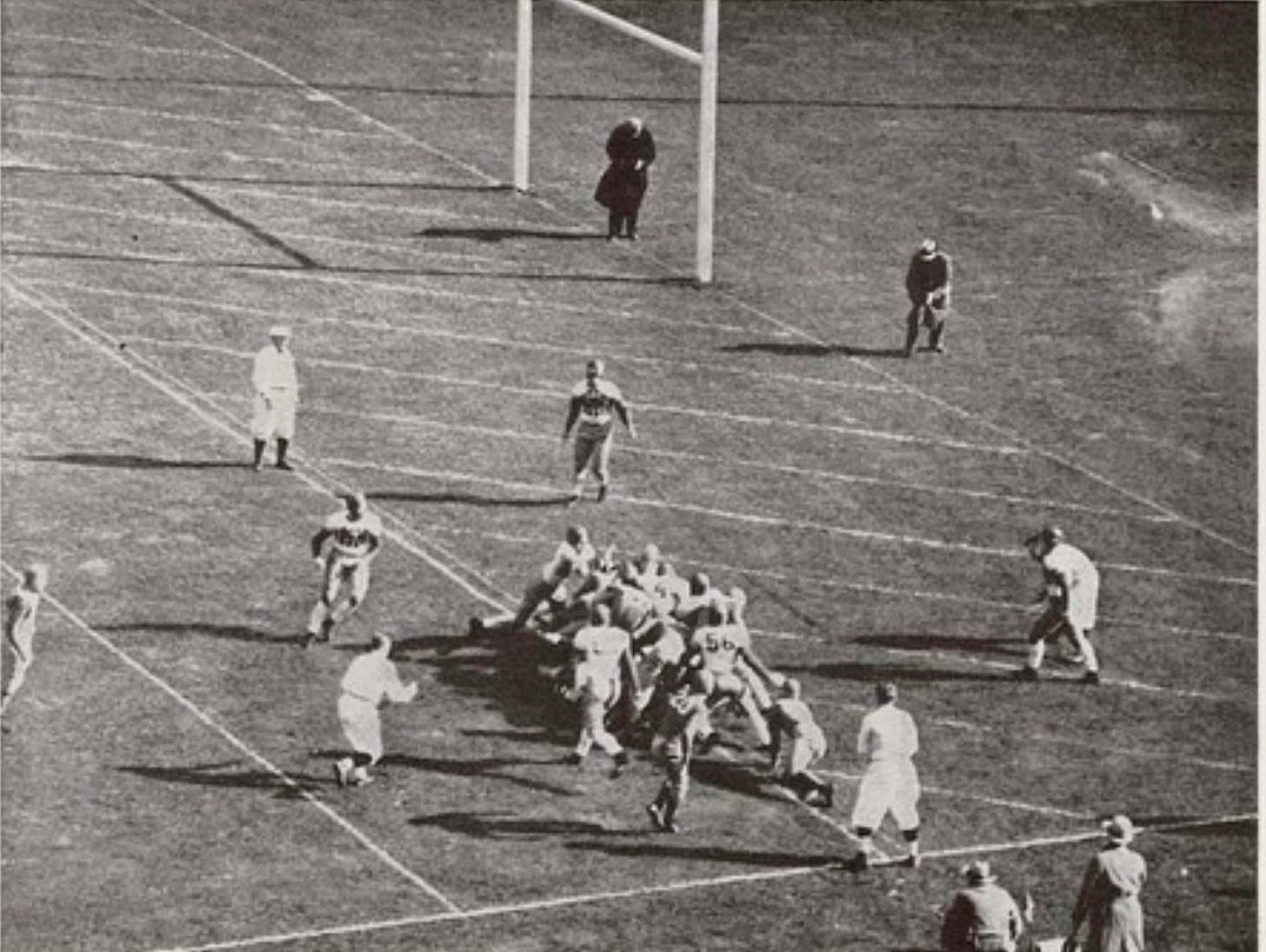Today's Tidbit... Seeing The Future In 1933
William Alexander won the 1929 national championship, a season capped by a Rose Bowl victory that included Cal’s Roy Riegels running the wrong way. Alexander was the first to coach in the Rose, Sugar, Orange, and Cotton Bowls, so the guy knew his stuff.
Still, there are many instances when top-notch coaches prove to be wrong about how a new rule might affect the game, but Alexander was not one of those in 1933 when hash marks entered football. Before hash marks, the ball was brought fifteen yards in from the sideline after going out of bounds. However, when a play ended on the field, the next play started from that spot, whether one or ten yards from the sideline.
Those living in 2022 know the impact of hash marks, but Alexander peered into the future, projected their impact, and was spot on. Alexander predicted the new rule would:
Reduce the emphasis on offenses playing the game in the middle of the field. Hash marks opened the playbook. Sweeps and passes near the sideline became less limiting, knowing the ball would be brought infield.
Eliminate the “sideline play,” as it was called at the time. That is, teams stuck next to the sideline often ran the ball out of bounds so they could run the next play from fifteen yards from the sideline. (The sideline play was akin to quarterbacks wasting a down by spiking the ball today.)
Reduce the impact of the coffin corner. Before hash marks, players tackled on a third down close to the sideline and in the red zone meant field goal attempts were made from a tough angle.
Alexander proved to be right on each count. Each point seems obvious in hindsight, but it was less clear at the time.

Football Archaeology is reader-supported. Click here to buy one of my books or otherwise support the site.


